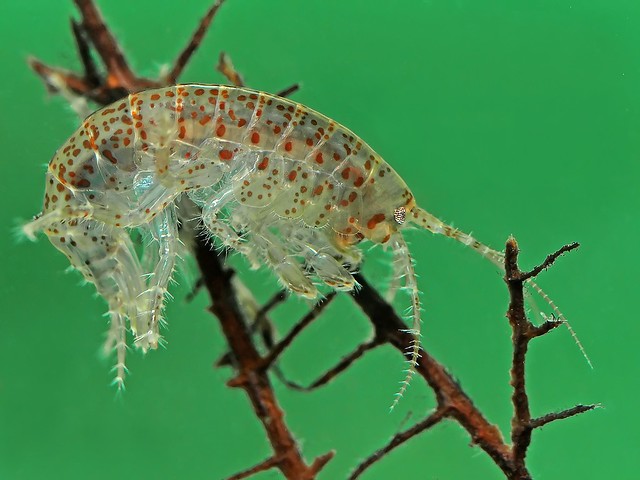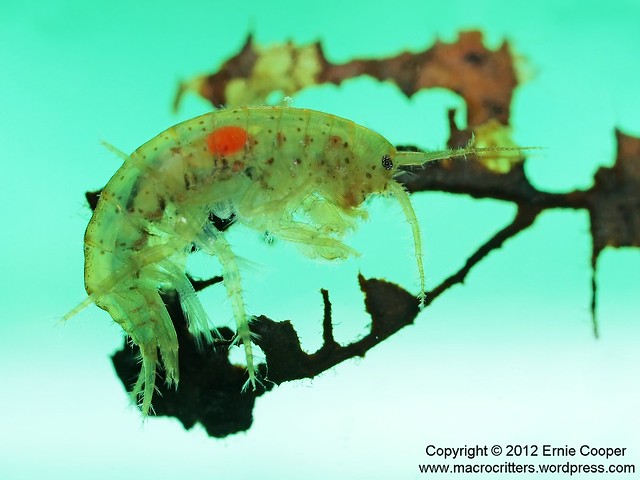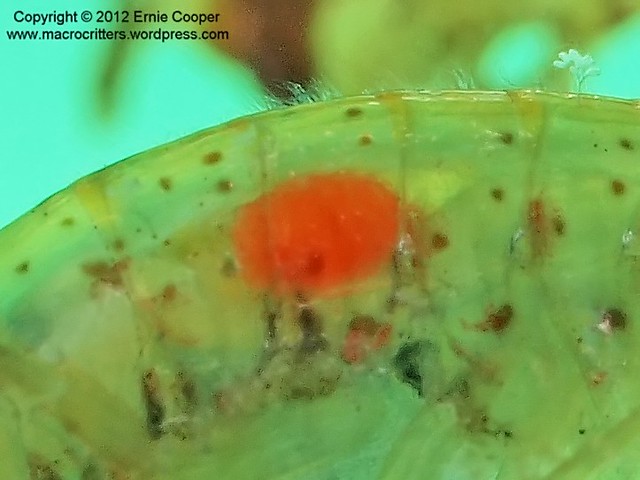|
|
Post by ecooper on Jan 10, 2013 12:46:42 GMT -8
 amphipod tiff spotted edit colour_filtered unsharpen_filtered amphipod tiff spotted edit colour_filtered unsharpen_filtered by ernie.cooper, on Flickr It has been waaaaay too long since I posted any photos. Funny how life can speed-up and suck all your time—especially over Christmas holidays when you have kids! Anyhow, I’m back and after a 2-week hiatus I have finally posted some photos on my blog of freshwater amphipods (that I took last summer). The photo above is of a very pretty specimen of Gammarus lacustris; apparently the only species of freshwater gammarid amphipod found in British Columbia. Whenever (and wherever) I have collected freshwater Gammarus in the past, they have been coloured drab shades of brown and olive green. But as you can see, the specimens I collected from this particular stream showed some real diversity in colouration, including some really pretty specimens with bright red spots on a translucent yellowish body. Others had a single very obvious bright red spot on their side. I still don’t know if the spot was on the critter’s exoskeleton or was something inside the body…  amphipod red spot sharpened copyright ernie cooper_filtered amphipod red spot sharpened copyright ernie cooper_filtered by ernie.cooper, on Flickr I really need to get back to that stream again this summer to collect more of these critters and do a better job of photographing them… Cheers, EC www.macrocritters.wordpress.com |
|
|
|
Post by dertodesking on Jan 11, 2013 14:11:01 GMT -8
Wow  Simon |
|
|
|
Post by ecooper on Jan 16, 2013 12:16:57 GMT -8
The mystery of the amphipod with the red spot has been solved...it turns out that the red spot was actually an acanthocephalan (thorny-headed or spiny-headed worm) parasite called Polymorphus. Acanthocephalans are parasitic and don’t have a digestive tract; they are basically a sack containing reproductive organs and musculature with a spiny proboscis that can stick out of one end. The proboscis is used to stab into and attach to the gut of its host (the animal in which it is living and feeding from). They ingest nutrients directly through their body surface. The cool thing is how Polymorphus alters the behaviour of the host amphipod. Gammarus lacustris are preyed upon by ducks (amongst other predators). Needless to say they generally try to avoid being eaten and tend to avoid light and stay away from the surface (where ducks are). However, Polymorphus eventually causes its host to becomes attracted by light and swim towards the surface to increase the likelihood of being eaten by a duck. The bird then becomes infected by the parasite... Below I’ve uploaded a tightly cropped version of the red-spot photo. Now I’m wondering what the little clump is that is growing on the back of the amphipod (in the upper right corner of the photo)? Cheers, EC www.macrocritters.wordpress .com  amphipod red spot very tight crop_filtered amphipod red spot very tight crop_filtered by ernie.cooper, on Flickr |
|
|
|
Post by papilio28570 on Jan 24, 2013 21:51:47 GMT -8
Simply amazing!
|
|
|
|
Post by Borja Gómez on Jan 25, 2013 6:18:09 GMT -8
Hello
Very good photos! Those isopods look very nice!
The clump you see it's a protozoa, of the ciliated group. May be anything of the Peritrichia like the typical Vorticella... I can't tell at that distance and also because I'm not expert.
Regards
|
|